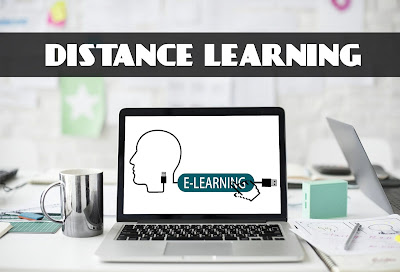This article brings you the information on 5 Advantages and Disadvantages of Distance Learning | Drawbacks & Benefits of Distance Learning. From this post, you will know the pros and cons of distance learning.
Let's get started,
Advantages of Distance Learning
1. Cost Effective
For students who are financially unstable, distance learning is considered to be a much cheaper option. Traditional collages and schools require students to travel frequently. Thus, making physical presence compulsory.
Fortunately, this is not a requirement in distance education. Entire expense spent for commuting is eliminated in distance learning. Learning institutions too are benefited from the cost savings since they no longer need to rely on physical locations. Additionally, they can save money spent on expenses like electricity, water and other facilities.
2. Eco-Friendly
Obviously, distance learning offers many environmental benefits. In the first place, energy consumption is substantially reduced without the need to power large lecture halls or classrooms. This is because no student is physically present at the campus meaning the usage of electronic devices are omitted.
Moreover, since students stay at home avoiding transportation, the amount of carbon footprints produced are notably reduced. Whether it is private or public, both transportations contribute to excessive CO2 emission which is known to be a major hazard for the environment.
3. Schedule Flexibility
Certain institutions offer prerecorded videos of the lecture sessions which students can refer later on. Learning materials are usually uploaded to the system so that students can download it anytime. Distance learning does not come with a fixed schedule. Hence, students can create their own schedule. However, this flexibility cannot be expected during live lecture sessions.
In addition to that, distance leaning is also independent of a physical location. Only resource required for participation is a computer with an active internet connection. Without the constrain in distance, people those living in remote areas are especially benefited from distance learning. In other words, students will be able to study at their own convenience without a place restriction.
4. Convenience
Class room education is not always the best way to interact. Many students feel intimidating to raise questions. Particularly, the shy students who are in doubt. Luckily, distance learning provides a more convenient environment for these students. Options like private chat allows students to communicate with their instructors personally without apprising the entire class.
5. Work Opportunity
In the contrary to a conventional course, a distance learning program provides the opportunity for the students to pursue their career. Distance learning is the optimal choice for the students who doesn't want to give up working. However, most of the programs are self-paced with deadlines. Meaning, students must find the best learning plan despite a busy working schedule.
Disadvantages of Distance Learning
1. No Practical Skills
Distance learning mostly focuses on the theoretical part, it lacks personal components required for learning. The process is not recommended to students willing to gain hands on experience. For an example, it is practically impossible to conduct scientific experiments those were actually taught in the lectures. Students cannot gain the practical exposure just by watching a video. To grasp the concept better, they must engage in practicals physically.
2. Lack of Interactions
Lack of physical interactions is a major concern when it comes to distance education. Al though students feel comfortable while studying at home, at the same time they need to tackle the isolation that results from the lack of student engagement. Interactions with peers is highly crucial for students to develop their self esteem and problem solving skills.
Apart from online messaging services like chatrooms and emails, there is absolutely no way to physically interact. Without proper social interaction, students often face mental health consequences. Mostly associated with loneliness, anxiety and depression.
3. Distractions
In distance education programs, many students find it challenging to focus. Unlike in traditional classroom environment, distance learning instigates lots of distractions. Mostly, through means of digital technology. Perhaps, there are high chances for a student to be distracted from social media. Students often mindlessly scroll social media newsfeed for hours neglecting studies or assignment that must be finished within a deadline.
Same scenario is possible when receiving a text from peers. Besides electronic devices, distractions can also be in the form of surroundings. Noises from family members & neighbors, television turned really loud, street vehicles, all draws attention away from studies.
4. Absence of Motivation
Distance education programs deals with assignments and course works. Programs like these requires self motivation. Unfortunately, not every student is able to motivate themselves with the right pace.
Unlike in traditional courses, there is no constant reminder from the peer students about pending assignments and course works. Many students with the habit of procrastination often fail to stick to deadlines. Eventually, making it hard to finish the course successfully.
5. Technical Issues
Distance education involves the use of sophisticated computer equipments as well as software. Hardware equipments include computer, webcam and headphones. Like all other electronic components, they too are subjected to malfunctioning.
Similarly, the communication software used for class sessions can experience crashes and errors. Consequently, it can interrupt the learning process of the student. What's even worse is that if it happens from the instructor's side, the entire class session can come to a halt.










Distance learning offers flexibility and convenience, allowing students to study at their own pace from anywhere. It also promotes inclusivity by accommodating diverse learners. However, challenges such as limited social interaction and potential technology issues can hinder the learning experience. Overthinking in relationships book
ReplyDeleteExploring the pros and cons of distance learning is crucial for anyone, including a book marketing company, to adapt effectively in today's evolving educational landscape. Stay informed, stay ahead!
ReplyDelete